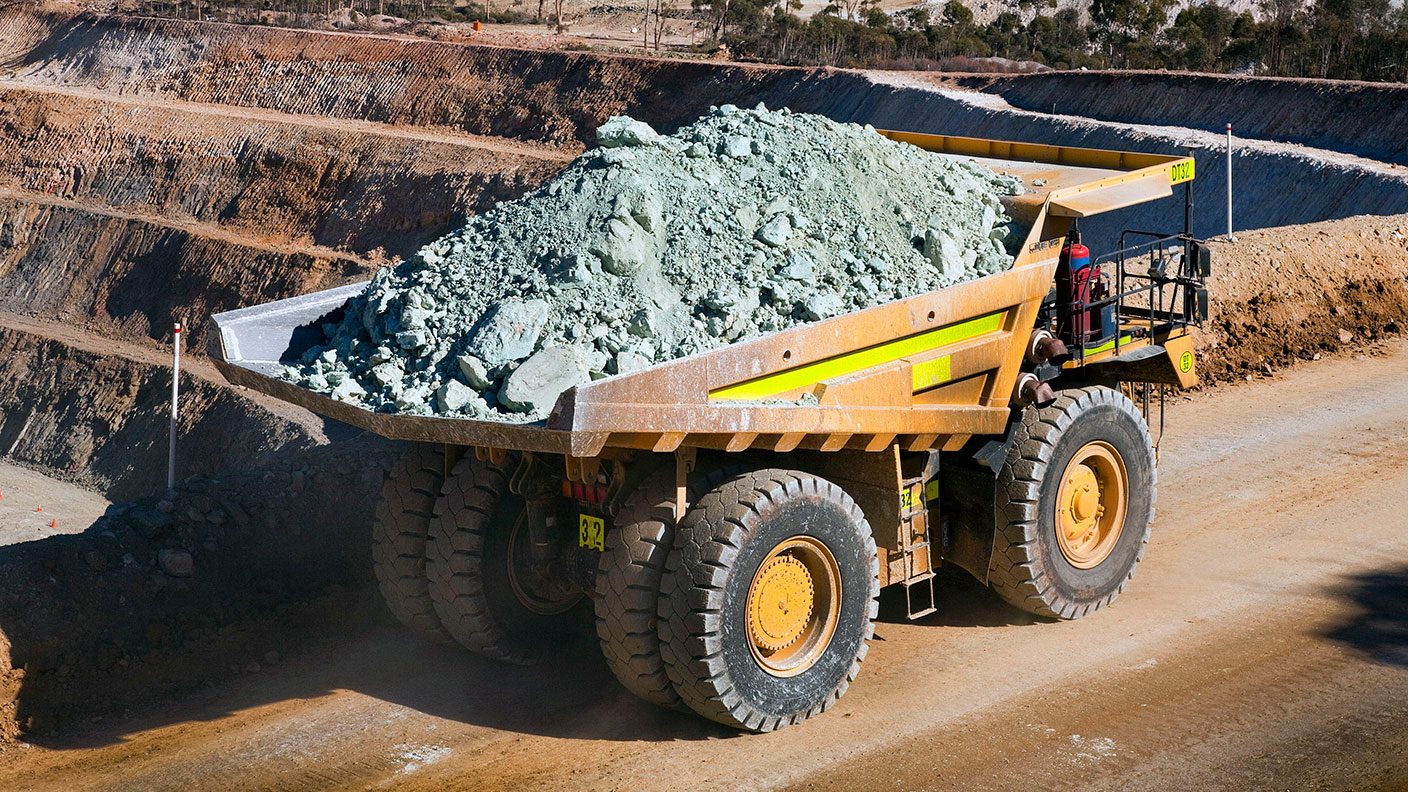How to buy into the next big commodities bull market
Commodity prices move in cycles. And we’re at the start of the next big uptrend as a shortage in supply hits a surge in demand. Merryn Somerset Webb picks the best ways to buy in.


Last weekend everyone slightly wished they owned silver. The social-media driven investors who so upset the market with their short squeeze on GameStop spent Saturday and Sunday chatting about doing the same to the metal – which obligingly rose 7.7% on Monday alone.
The excitement has died down since the r/wallstreetbets Reddit chatroom has dropped out of the headlines. But while you need never think of GameStop again, you should definitely keep thinking about silver.
Silver is likely to play a core role in the next commodity supercycle. You don’t get proper long bull markets in industrial commodities very often: over the past 227 years, says Saxo Bank, there have only been six. But when you do, they are all driven by the same easy-to-see-in-hindsight dynamics: a glut of supply drives down prices; producers go on strike – they stop exploring and innovating; supply falls behind demand; stockpiles run down and prices rise. It’s as simple as that.
MoneyWeek
Subscribe to MoneyWeek today and get your first six magazine issues absolutely FREE

Sign up to Money Morning
Don't miss the latest investment and personal finances news, market analysis, plus money-saving tips with our free twice-daily newsletter
Don't miss the latest investment and personal finances news, market analysis, plus money-saving tips with our free twice-daily newsletter
The key thing for investors to note is that once events are under way the price rises tend to go on for some time due to the fact that it takes well over five years to get a new mine up and running.
Supply shortage is set to hit a surge in demand
So where are we in the cycle now? At the beginning of the good bit (from an investor point of view at least.). The big metal miners effectively went on investment strike in 2014 – stopping almost all expansionary spending with the result that a large number of industrial metals were already in short supply even as we went into the pandemic last year.
That shortage of supply is soon to hit a new wave of demand. In the short term there is the pent-up demand that will be released as we leap out of lockdown and on to the road. Note that the US has effectively been providing a highish minimum income for everyone for a year (there is likely another $2,000 per person on the way) – and that money will find its way into the real economy pretty quickly.
But there is more to the new demand dynamic than that. In the post-Covid-19 era, it appears that no one will worry much about fiscal prudence. Instead, there is every chance that the fashion for the government to fill individuals’ pockets will continue; that the endless promises of green transformation and infrastructure revolution will come good; and, crucially, that governments will prioritise high levels of employment over low levels of inflation. Think of the volume of cash that will spray around economies, and perhaps we are moving into something of a “Keynesian golden age” says Gavekal Research.
All this is wonderful for industrial metals and particularly wonderful for any materials that are at the core of green transformation. There is, for example, no replacement for copper in electrification. The more you think green, the more you need brown metal.
Meanwhile, just because most of the discussion around infrastructure is about clean energy doesn’t mean oil won’t be dancing at the super cycle party. Sure, prices briefly went negative last year and even now the coast of Shetland is littered with unwanted tankers. But we will be reliant on fossil fuels for decades to come – there is no getting out of it – and so could be curtailing supply too early in the game. To those that argue that after so long of lockdown our behavioural changes will have become so ingrained we will travel to our offices less and take fewer holidays than we have in the past, all I can say is check out cruise bookings. Carnival says bookings for 2022 are already outpacing those for 2019.
Add it all up, says Saxo, and this is to be the year in which “the narrative of a greener government supported transformation of the social paradigm meets the reality of too little supply, inadequate infrastructure and a business world that has been so busy getting digital it forgot the physical world”. Great products don’t just need to be hailed on social media, they need to be produced, shipped and delivered. That needs real-world commodities. The new bull started last year – the Bloomberg Commodity Index rose by 10% in the last quarter of 2020 – but 2021 could be the year it really gets going.
The best ways to invest in the commodities supercycle
So how do you invest? The first thing to note is that if you are an index investor in the UK you are fairly exposed to miners and oil companies already: this is one reason why the UK market has been underperforming.
There are a variety of good low-cost exchange traded funds. For gold, there is iShares Physical Gold, for example, and for silver iShares Silver Trust ETF – the one the Reddit group focused on! Otherwise, for a gold and silver fund look at Merian Gold and Silver Fund.
I pushed its manager Ned Naylor-Leyland, head of gold and silver at the Jupiter funds group, to name his favourite silver stock last week when I spoke to him for ht eMoneyWeek Podcast (listen to it here). He was very clear that you absolutely must not own only one silver stock: this is a high-risk sector in which diversification is absolutely vital. But for his biggest silver holding he’d choose Pan American Silver (Toronto: PAAS), the Canadian miner, because of its scale, good management and growth pipeline.
On copper, a nice UK-listed smaller miner is Atalaya (LSE: ATYM), which owns an ex-Rio Tinto mine in Andalucía. It is, says Amati’s Dr Paul Jourdan, well run and has lots of room to explore around its active workings.
If you prefer a larger single mining stock, perhaps consider Rio Tinto (LSE: RIO) – which Charles Plowden, manager of the Monks Investment Trust (usually known for its tech bias) has been adding to his portfolio. He expects profits and cash flows to be very strong during a seven-to-ten-year-long tight supply situation. Rio, he says, will “make out like a bandit”.
Investment trust investors might also look to BlackRock World Mining (LSE: BRWM) or to one of two smaller trusts. BlackRock Energy and Resources Income (LSE: BERI) and CQS Natural Resources Growth and Income (LSE: CYN) are both small and reasonably expensive (ongoing charges of 1.4% and 1.8% respectively) but trade on discounts to their net asset value of 8% and 14%, and pay 4% plus dividends. Better still, the r/wallstreetbets crowd hasn’t heard of them yet.
Get the latest financial news, insights and expert analysis from our award-winning MoneyWeek team, to help you understand what really matters when it comes to your finances.
Merryn Somerset Webb started her career in Tokyo at public broadcaster NHK before becoming a Japanese equity broker at what was then Warburgs. She went on to work at SBC and UBS without moving from her desk in Kamiyacho (it was the age of mergers).
After five years in Japan she returned to work in the UK at Paribas. This soon became BNP Paribas. Again, no desk move was required. On leaving the City, Merryn helped The Week magazine with its City pages before becoming the launch editor of MoneyWeek in 2000 and taking on columns first in the Sunday Times and then in 2009 in the Financial Times
Twenty years on, MoneyWeek is the best-selling financial magazine in the UK. Merryn was its Editor in Chief until 2022. She is now a senior columnist at Bloomberg and host of the Merryn Talks Money podcast - but still writes for Moneyweek monthly.
Merryn is also is a non executive director of two investment trusts – BlackRock Throgmorton, and the Murray Income Investment Trust.
-
 Why Trustpilot is a stock to watch for e-commerce exposure
Why Trustpilot is a stock to watch for e-commerce exposureTrustpilot has built a defensible position in one of the most critical areas of the internet: the infrastructure of trust, says Jamie Ward
-
 Tetragon Financial: An investment trust with stellar returns
Tetragon Financial: An investment trust with stellar returnsTetragon Financial has performed very well, but it won't appeal to most investors – there are clear reasons for the huge discount, says Rupert Hargreaves
-
 Halifax: House price slump continues as prices slide for the sixth consecutive month
Halifax: House price slump continues as prices slide for the sixth consecutive monthUK house prices fell again in September as buyers returned, but the slowdown was not as fast as anticipated, latest Halifax data shows. Where are house prices falling the most?
-
 Rents hit a record high - but is the opportunity for buy-to-let investors still strong?
Rents hit a record high - but is the opportunity for buy-to-let investors still strong?UK rent prices have hit a record high with the average hitting over £1,200 a month says Rightmove. Are there still opportunities in buy-to-let?
-
 Pension savers turn to gold investments
Pension savers turn to gold investmentsInvestors are racing to buy gold to protect their pensions from a stock market correction and high inflation, experts say
-
 Where to find the best returns from student accommodation
Where to find the best returns from student accommodationStudent accommodation can be a lucrative investment if you know where to look.
-
 The world’s best bargain stocks
The world’s best bargain stocksSearching for bargain stocks with Alec Cutler of the Orbis Global Balanced Fund, who tells Andrew Van Sickle which sectors are being overlooked.
-
 Revealed: the cheapest cities to own a home in Britain
Revealed: the cheapest cities to own a home in BritainNew research reveals the cheapest cities to own a home, taking account of mortgage payments, utility bills and council tax
-
 UK recession: How to protect your portfolio
UK recession: How to protect your portfolioAs the UK recession is confirmed, we look at ways to protect your wealth.
-
 Buy-to-let returns fall 59% amid higher mortgage rates
Buy-to-let returns fall 59% amid higher mortgage ratesBuy-to-let returns are slumping as the cost of borrowing spirals.
